
Thank You Veterans


Saint Remy Feria…Bulls
Bulls were running in the streets. We were there. This was not Pamplona.
On our way into town, the owner of the apartment we had rented called and told us to arrive before 4:00 in the afternoon as the bulls would be running. Not having a clue what he was talking about, we made sure we arrived early.
Signs all over town advertised the Feria, the popular festival of summer. As we drove through the streets, we noticed huge, heavy metal barricades lining the streets. Were there really going to be bulls running down the streets? If the fences were any indication, there were.
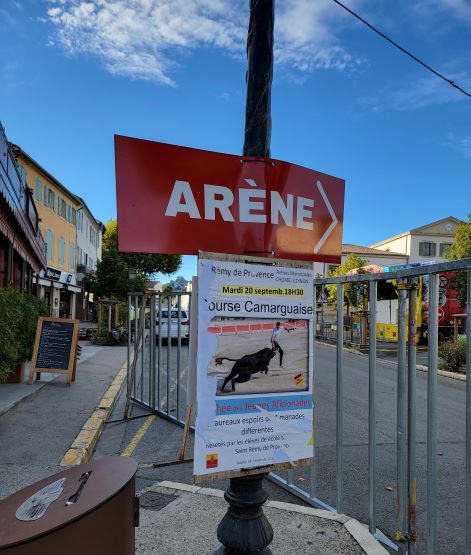
Wondering what this was all about, we asked our host. He explained the festival brings all aspects of games involving bulls…except for killing them. It’s more of a four-day party celebrating harvest. There’s a parade where everyone wears traditional costumes and traditional brass bands go up and down almost every street. There are bull races, running of the bulls, and Camarguais horses. A Portuguese bullfight takes place…but no killing of the bulls.
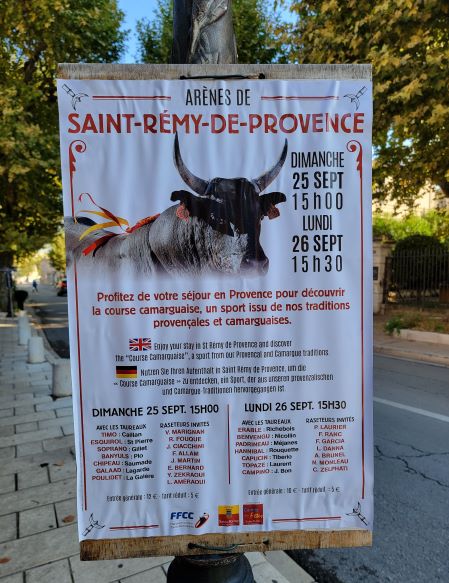
Bulls are driven through the streets by teams of guardians riding gray-white Camarguais horses. The men and women carry long spears on the stocky horses. These horses are descendants of a very old breed with square jaws, long manes, thick necks, and big hoofs. They are famous for their agility and endurance, not necessarily for their beauty.
Each team herds their bulls, galloping at full speed through the streets. The goal is to drive the bulls up a ramp and into a truck. Teams are judged on speed, skill, and presentation.
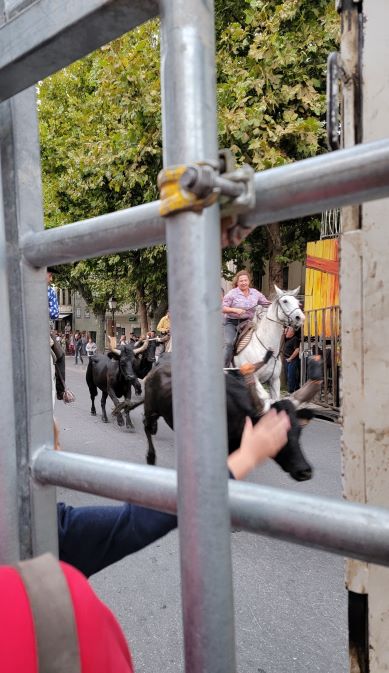
Now we knew why the barricades were high, strong, and thick metal.
Once the riders started herding their bulls down the streets, cheers and clapping became almost deafening. A festival indeed.
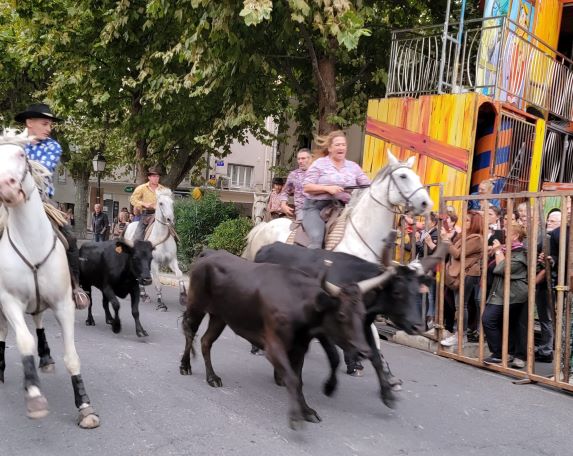
We noticed another piece of this crazy run. Young men, mostly, step through the barricades and try to touch them on their back. Apparently, it’s for luck! Right…
As the festivities wind down, people head to their favorite bar to toast the night’s running of the bulls.
As for the parade…stay tuned.
Popes Palace, Avignon, France
Frist, a little history…
Much of the 14th century Italy was ravaged by wars. By 1309 Rome was basically a violent and unwelcoming city. So violent that Pope Clement V could not remain in the city of Rome.
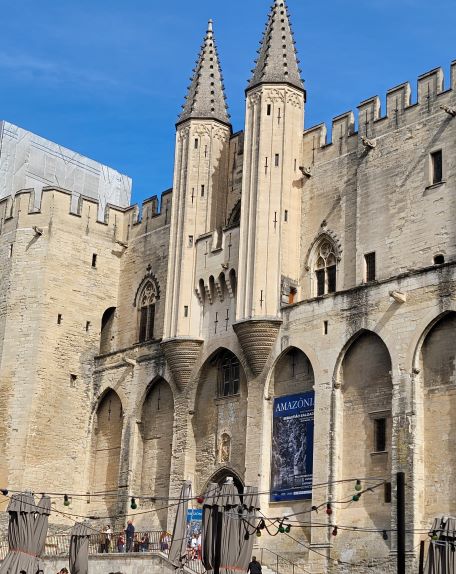
The Popes then moved the center of the Catholic church to Avignon, France from 1309 to 1377. Seven different popes were in control of the church during that time. By 1377 Rome’s atmosphere had improved that the Pope was able to return.
During their time in Avignon, Pope Benoit XII and Pope Clement VI built the largest gothic style palace and church in the world. This took only 18 years to build most of the enormous series of buildings.
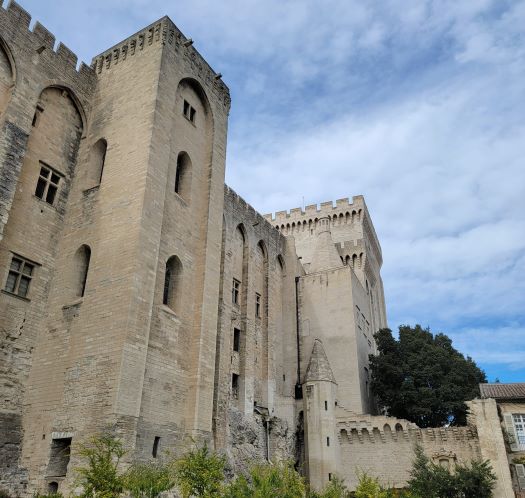
No expense was spared on building this as the Catholic church was eager to spend the money on the project. With 15,000 square meters of floor area, decorated lavishly, this was the most impressive building in the western world at the time it was completed.
In 1378 the French cardinals objected to a new Italian pope and they established an alternate pope in Avignon, Pope Clement VII. He reigned until 1394 and was succeeded by Pope Benedict XIII. These two were known as the Anti-Popes, dividing the Catholic church until 1403.
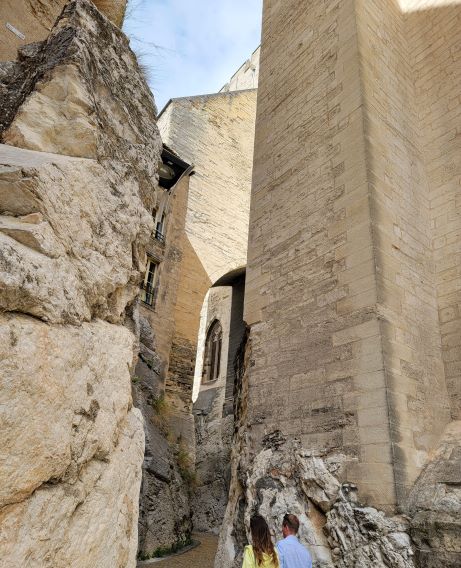
By the 15th century, the Popes Palace fell into disrepair for several centuries. After the French Revolution, the palace was used as a military prison. Since 1906 the palace has undergone major restoration.
To visit…
Spend at least an hour, more if you can, to wander through the 15,000 square meters of amazing space. Look up at the Department of Archives. It’s 52 meters up.
Enter the Popes Palace through the Porte des Champeaux, the main entrance in the middle of the front. The two turrets on either side are new since the originals have long since collapsed. There are two courtyards. The Great Courtyard, La Cour d’Honneur, and the Small Courtyard. You will see the New Palace with its Great Chapel and the Great Audience Hall.
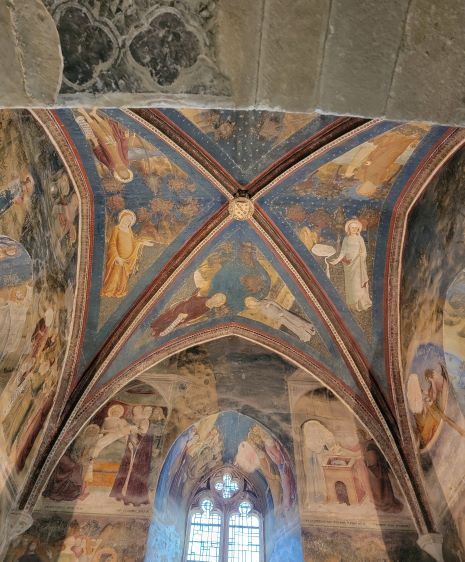
A total of 25 rooms are open to visitors. Soaring architecture, frescoes, wall coverings, mosaic tiles, paintings, a pope’s personal chambers, and more are sites you don’t want to miss. The Papal Throne in the Popes Room is a careful copy, but still impressive. There are tombs of some Popes, a grand staircase, and so much more. Check out the watchtowers, marvel at how they built 10-foot-thick walls, and take extra time to make your way down some impossibly steep stairs to one of the gardens. Going back up is almost more challenging as you climb a narrow tower to the level above.
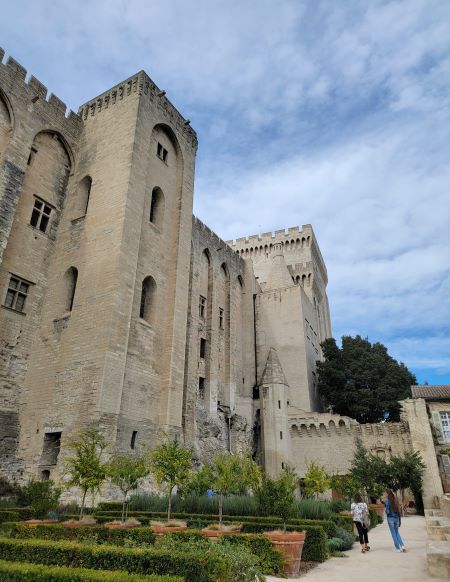
Some rooms even have computer screens depicting what that room would have looked like back in that time period.
Prebook a guided tour to avoid the crowds and the lines if you go during a busy time of year.
Classified as a UNESCO site in 1995 the Palace of the Popes is one of the 10 most visited sites in France.
If You Go: The Palace of the Popes is located at Pl. de Palais, Avignon, France
Pont du Gard
Northeast of Nimes lies the town of Uzes. With its rich French heritage, considered the first duchy of France, and its dozens of small villages surrounded by oaks and pines Uzes has plenty to offer.
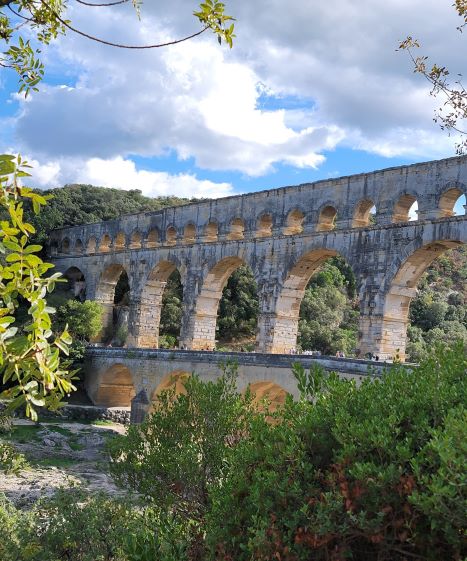
Perhaps the most famous and certainly a huge reminder is the Pont du Gard.
Located in the Occitanie region of France is the Pont du Gard, a three-story aqueduct bridge crossing the Gardon River. The Pont du Gard rests on a rocky base, creating a challenge for the builders.
A little history… Emperor Augustus, who expanded the city of Nimes, dreamt of making Nimes the rival to Rome. But, he needed water. There was a river. The river Eure met their needs, if they could get the water where they wanted it.
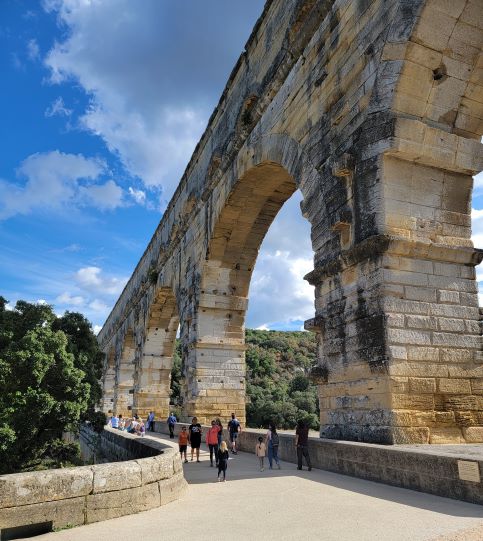
Emperor Claude decided to build an aqueduct, knowing there were two challenges. They had to bypass the Garrigues massif which separates Uzes from Nimes and they had to span the Gardon with its over 50-foot floods.
In only 15 years, the 49 meter high Pont du Gard was completed. At 52 km long, it is the highest in the Roman world. Stones from the Estel quarry, 500 meters away, were brought on flat-bottomed boats against a major river current. The arches of the aqueducts were massive at 24.5 meters. This was well over the norm at that time which was 13 meters. Nothing like that had ever been done.
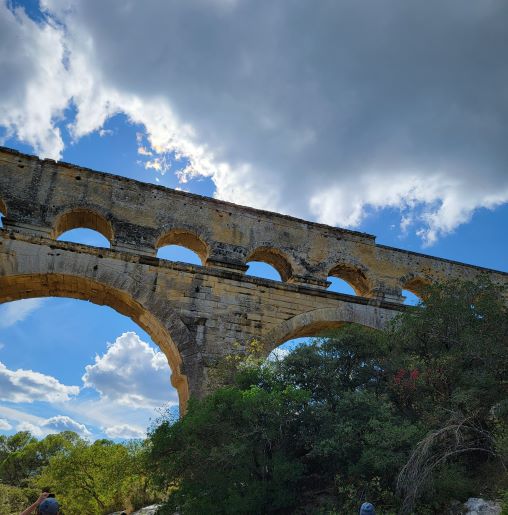
With the water the aqueduct was able to transport for fountains, spas, and houses of the privileged the city of Uzes grew from just a few thousand to over 22,000.
The Pont du Gard has been considered one of the major accomplishments of the Roman civilization. It ceased to function around the beginning of the 6th century. Today it is located at a distance from the villages with only two buildings close to it.
This is a true masterpiece of Roman construction. This most-visited ancient monument in France is listed as a world heritage site by Unesco. Take some time to explore this amazing site.
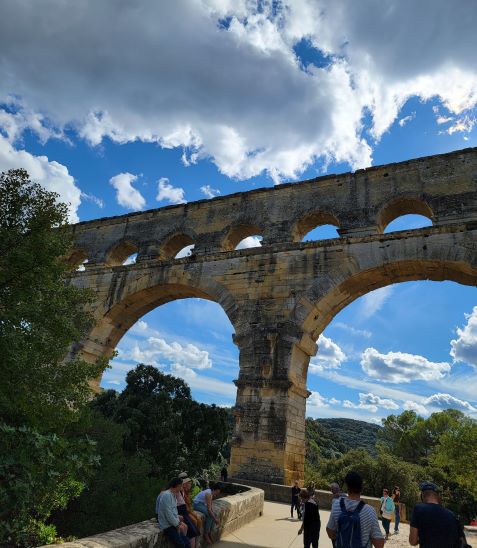
If You Go: The Pont du Gard is located at 400 Rte du Pont du Gard, 30210 Vers-Pont-du-Gard, France
Pommery Champagne House
Not only does Pommery produce an amazing dry Champagne, the history surrounding Madame Pommery is truly an interesting aspect of this house.
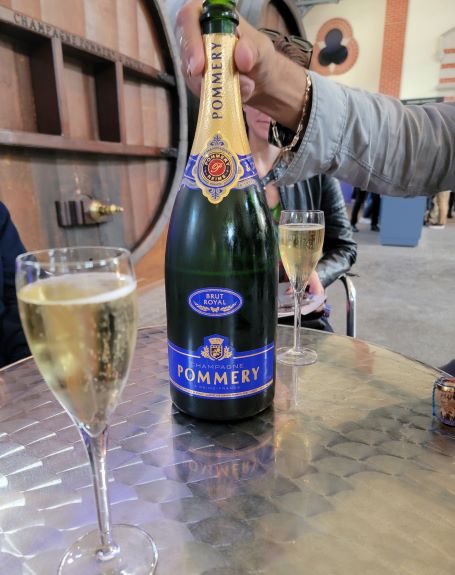
She was one of the great Champagne widows of the 19th century. She is the one you can credit with bring the sweeter sparkling wines to a dryer Champagne. Pommery was born in 1819 and married into a prominent wool family in Reims, France. Once her two sons were born, her husband left the wool industry and dived into the wine business. Two years later, he died. She was only 38 years old.
At that point she decided to carry on with his wine business, changing the business plan fairly quickly from red wines to sparkling wines. She had the uncanny ability to see that the English market would take a liking to delicate, fine, dry Champagne. And, it did.
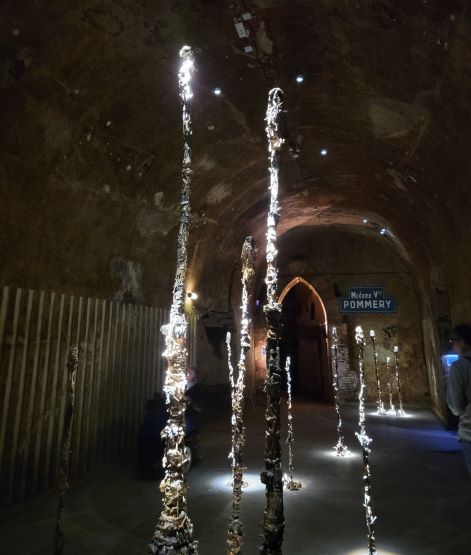
Ahead of her time, she created Pommery Nature in 1874, the first brut Champagne that had major commercial success. In 1868 she decided to relocate to a different place and launched the “construction site of the century” in Reims. She used the crayeres chalkpits as wine cellars. French and Belgian miners had dug into the earth an interconnected set of tunnels.
Today, the variety of grapes used, the quality of the harvest, the selection of vintages for blends, and the time spent ageing in the cellar all add to the special flavors of Pommery Champagne.
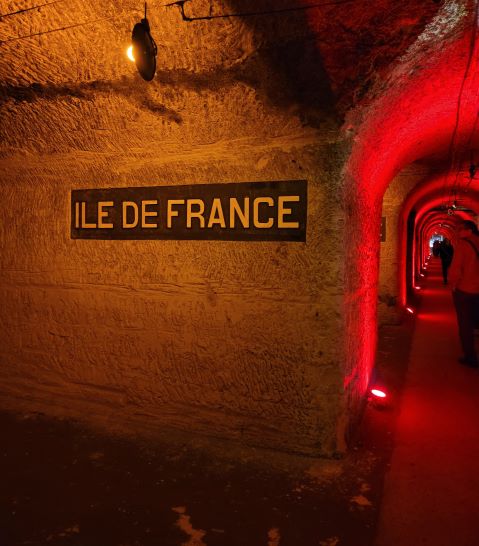
So many processes and procedures go into making this Champagne, with oenologists and the Cellar Master testing the entire way. This ensures Pommery’s distinctive aroma, flavor, and quality will be there in every bottle.
Take a tour, taste the Champagne, and do not miss the lower level of galleries. The staircase alone is amazing if not monumental. With 116 steps down is the only connection to the lower level of caves from the main level.
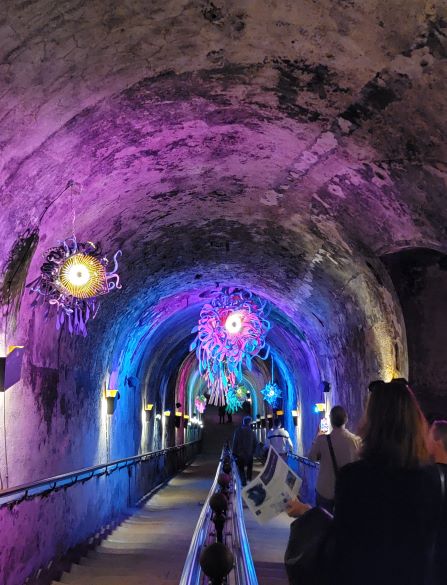
Art, sculptures, and rotating exhibits are tastefully arranged throughout the lower level. The Pommery Champagne house is not only a feast for your mouth…it’s a feast for your eyes as well.
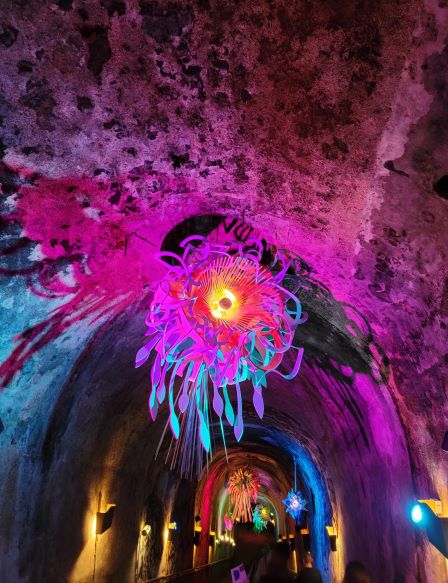
Cheers!
If You Go: Pollery is located at 5 Place du General Gouraud, Reims, France
Map and Atlas Museum of La Jolla
If maps are of interest to you, take some time to explore the Map and Atlas Museum of La Jolla. This is not a typical museum.
For one thing, it’s smaller than most museums. It’s more than an educational visit as well. The goal is to create an awareness and appreciation for history, geography, and politics of the world. The artistic beauty and sheer magnitude of the collection will surprise you.
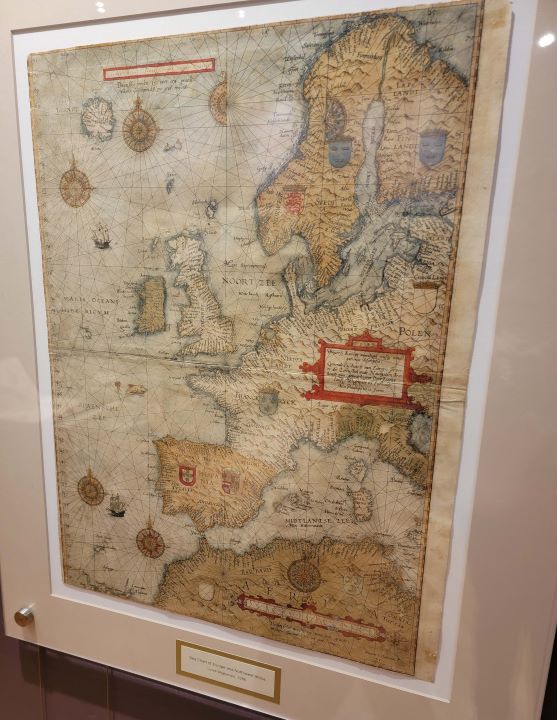
Wander though and look at maps that depict our world from those who first thought they knew what the world looked like to what it actually is today. You might be amazed at how close some were and how almost accurate others were.
Many explorers mapped out the geography as they traveled, giving others a glimpse of what the world as they knew it looked like. These are original maps. Fun depictions of Disneyland to San Diego’s Oil Fields to a map of the world from 1472 might be on display.
The permanent exhibition includes maps from a copy of 1472 map by Isadore of Seville, which is considered to be the first printed map. There’s also a tourist map of Southern California. Quite the eclectic group.
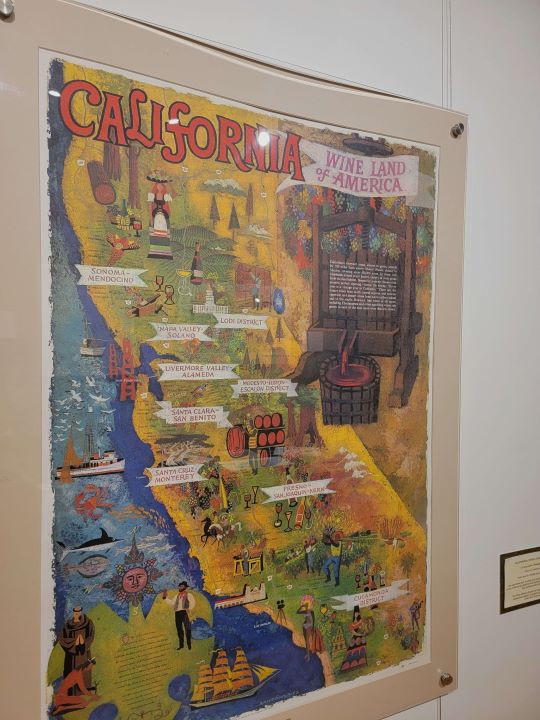
Island maps, sea charts, celestial maps, the Holy Land, maps by Benjamin Franklin, a rare manuscript map of New England by John Thornton, and so many others are displayed in various rooms.
There is a variety of educational tools and opportunities available for schoolteachers, educators, and the general public as well. This is truly a one-of-a-kind experience.
If You Go: The Map and Atlas Museum of La Jolla is located at 7825 Fay Ave. Suite LL-A, La Jolla. They are open by appointment. Call 855-653-6277 or email roz@lajollamapmuseum.org
Mission San Luis Rey
Discover history of California Missions with a visit to Mission San Luis Rey in Oceanside, California.
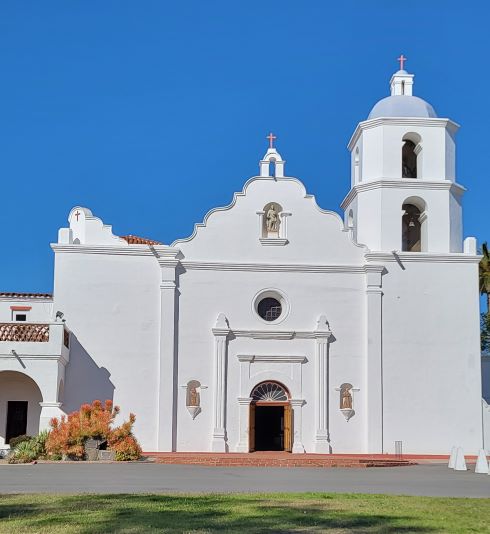
First some history:
Father Fermin Lasuen, successor to Father Junipero Serra, founded Mission San Luis Rey in 1798. This was the 18th mission in the chain of 21 missions in Alta California.
Mission San Luis Rey was named after King Louis IX of France, a 13th century king known for his compassion for the poor.
Prior to Spanish occupation, the Luiseno people inhabited this area for hundreds of years. Luiseno homes were dome-shaped, using a branch frame. The chief and shaman made and upheld the laws of the village. The men hunted and fished and the women gathered plants and food. Pestles for grinding were made as were baskets.
Missions were not authorized until the threat of Russian encroachment into the area in Alta California. Spain had learned to claim land by establishing a mission and sending dedicated padres with a few soldiers. The Mission San Luis Rey became home to over 3,000 Indians, 50,000 head of livestock, and large land cultivation. Grapes, oranges, olives, wheat, and corn were irrigated by water channeled from a nearby river. By 1830, the Mission was the largest building in California.
Throughout the years Mission San Luis Rey flourished and then decayed. In 1892 a group of Franciscans from Zacatecas, Mexico sought refuge at the Mission. From 1892 to 1912 the church, living quarters, the quadrangle, and barracks were rebuilt. This Mission restoration and preservation is an ongoing process and archaeological investigators continue to unearth the Mission’s past.
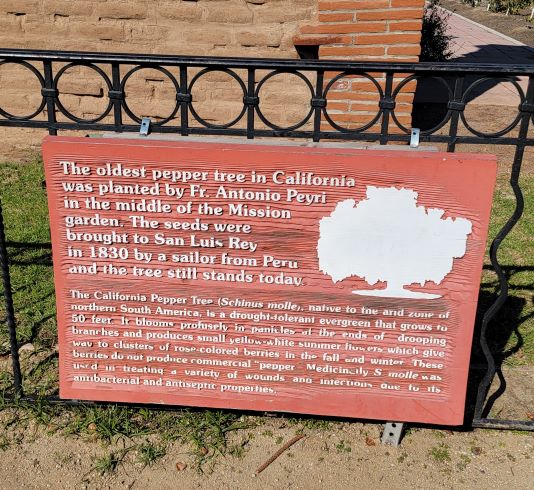
Some other quick facts:
We spent a morning taking the self-guided tour of Mission San Luis Rey. The period rooms portrayed life as it was throughout history. Ranging from the lifestyle of the Luiseno Indians to the Friars’ bedrooms to the Mission kitchen to way the Mission San Luis Rey is today. The original Lincoln Document which returned the Mission to the Church is included in one room.
Entering through the front doors of the Historic Mission Church, we first noticed the Spanish Colonial architecture. Both Baroque and Classical styles were represented throughout. Paintings and decorations showed the combination of Spanish and Indian cultures.
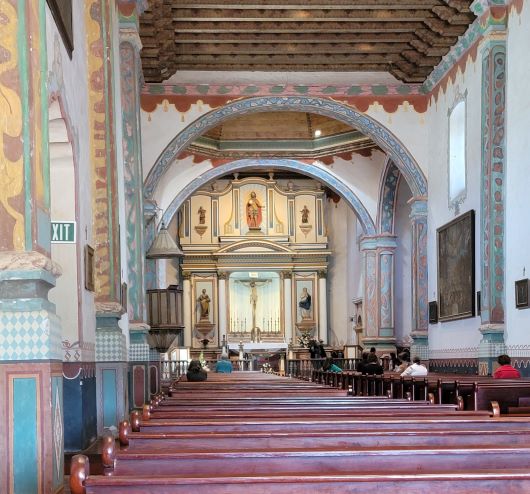
Wandering through the cemetery we noticed grave markers dating as far back as 1800 and up to 2020. The ruins of the adobe barracks that once housed Spanish soldiers assigned to protect the Mission San Luis Rey are well preserved.
Not to be missed is the oldest pepper tree in California. Even from the gates of the courtyard, this tree is impressive.
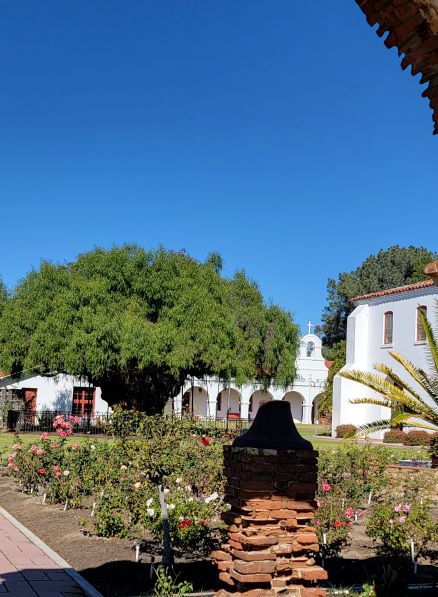
When you want a glimpse of life in a Mission, understand how Missions affected California history, and discover the rich history surrounding a National Historic Landmark take some time to visit Mission San Luis Rey.
If You Go: Mission San Luis Rey is located at 4050 Mission Avenue, Oceanside, CA.
Visit http://www.sanluisrey.org for more information
Le Diplomate Restaurant
Check out our favorite French restaurant in Washington, D.C., Le Diplomate. Walk out of the sweltering heat on a summer day into the cool interior of Parisian brasserie.
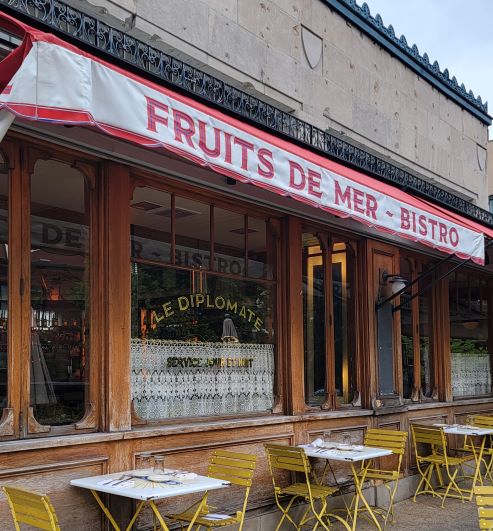
This historic building is now home to a bustling yet comforting French brasserie. Both the interior and exterior transport you immediately to a sidewalk in Paris. The menu doesn’t disappoint either. With a variety of Gallic classics, you can dine on onion soup gratinee, steak frites, escargot, bouillabaisse, and cassoulet. Pair those with a glass or wine from their curated wine list or choose from one of their specialty cocktails. Either way you will think you’re in France.
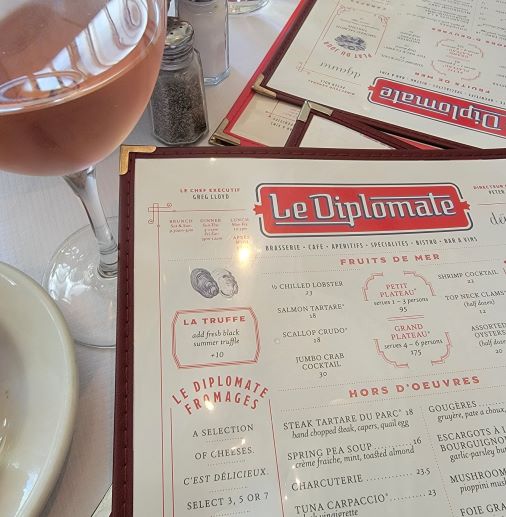
Check out more at https://lediplomatedc.com
If You Go: Le Diplomate is located at 1601 14th Street, NW in Washington, D.C.
Grains d’Argent Hotel
During our recent stay in the Champagne area of France, we spent a few nights at the Grains d’Argent Hotel. Located just four kilometers from Epernay and only 29 kilometers from Reims, many of the Champagne houses we were visiting were less than 10 minutes away.
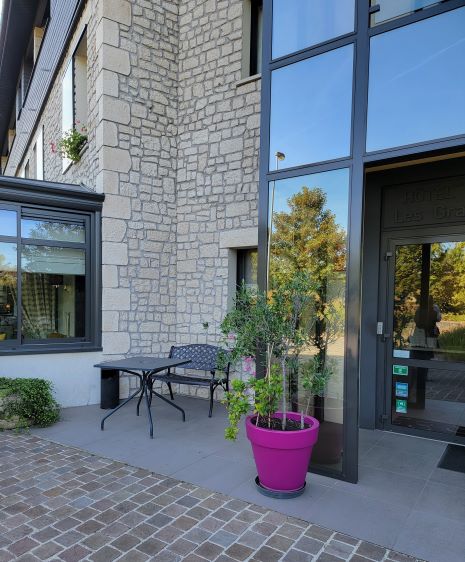
Not only was this in an ideal spot, it was an absolutely wonderful hotel. For starters, the hotel is surrounded by vineyards in the small town of Dizy. When we looked out our window, the vineyards of the Hautvillers were what we saw. These vineyards are considered to be the birthplace of Champagne. In fact, the village of Hautvillers, only a few kilometers away, is where Dom Perignon lived and is buried.
Our room, elegant, modern, and functional, was complete with Champagne and wine glasses and a mini fridge to store our wines. The bathroom, again modern and functional, was spacious with a huge walk-in shower.
More than just rooms, there are comfortable gathering spots in multiple places. This worked well for us as we had snacks and Champagne in several of those comfy chairs. The hotel let us use plates and silverware, so it was like having our own space to have our appetizers.
In the mornings, breakfast was offered. Everything we could want to eat before we started out the day visiting Champagne houses was perfect.
This high-quality facility definitely reflects the personality of its creator, Annabelle Hazard. From furniture to the bathroom lighting, this is a first-class hotel.
Located at the exit of Epernay, the Hotel Grains d’Argent is named after the plot of vines in Dizy. It literally means silver grains. I would say that is an appropriate name.
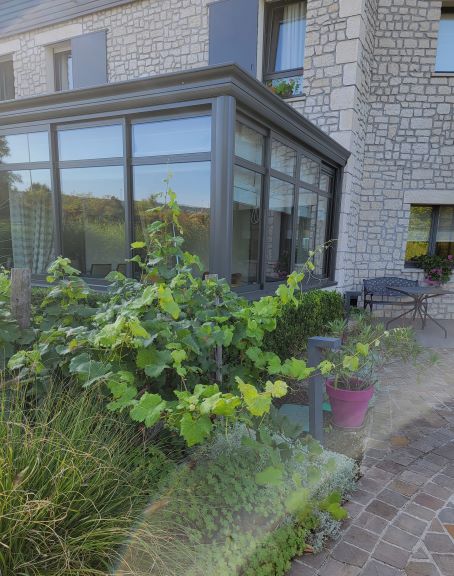
If You Go: Hotel Grains d’Argent is located at 1 All. du Petit Bois, Dizy, France
For more information: https://www.lesgrainsdargent.fr/
Deutz Champagne
Deutz, formerly Deutz & Geldemann, is a Champagne producer in the Ay region of Champagne, France. The house was founded in 1838 by William Deutz and Pierre-Hubert Geldermann.
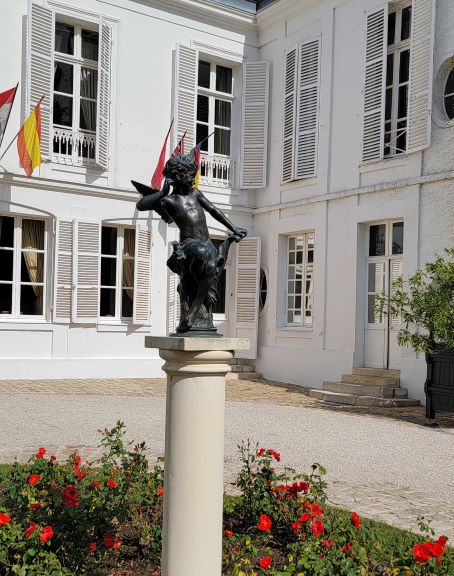
Since that time, the house of Deutz has been run and managed by successive generations of both the Deutz and the Geldermann families. The Rouzard family acquired the Duetz house in 1983. They also own Louis Roederer.
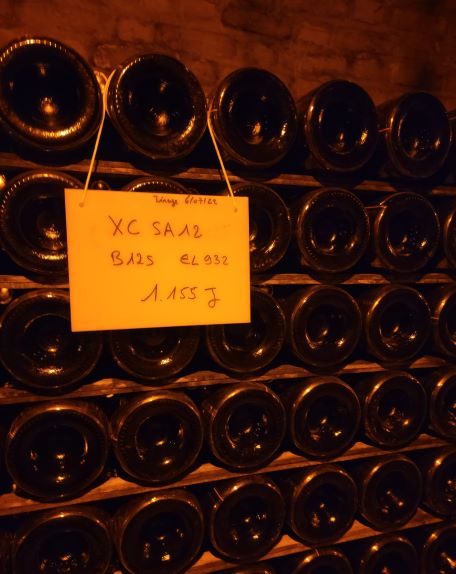
Deutz owns some of the Bordeaux wine estate of Chateau Vemous and the Rhone estate of Delas Feres. Branching out, Deutz formed a partnership with New Zealand producer Montana Wines. This was to make sparkling wines in the Marlborough wine region of New Zealand.
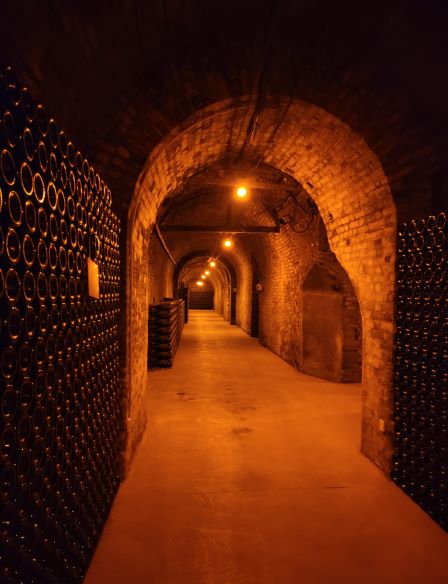
Touring the Deutz Champagne house, its impressive collection of Lalique crystal, and miles and miles of caves was a real treat when we were in Ay, France.
Even better, the Champagne tastings at the end of the tour was a terrific way to end a perfect day.

For more information, check out https://www.champagne-deutz.com/fr/intro/0